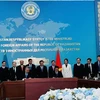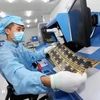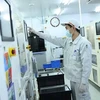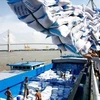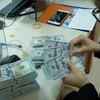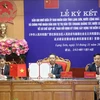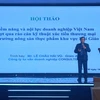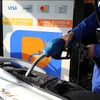The door to the 28-member European Union will open wider once the Vietnam-EU free trade agreement comes to life, as long as Vietnamese seafood exporters ensure food hygiene and safety, the Thoi bao Kinh te Viet Nam (Vietnam Economic Times) reported.
Most recently, the European Trade Policy and Investment Support Project (EU– MUTRAP) in conjunction with the International Cooperation Department under the Ministry of Agriculture and Rural Development organised a workshop to harmonise Vietnamese and EU food safety and quarantine regulations.
Experts cited that seafood exports to the union increased five-fold over the past 15 years, adding the number of Vietnamese exporters to the market has surged to 465 from 18 in 2000, comprising 27 percent of the EU market.
The increasing demand for aquatic products and favourable exports has facilitated the development of seafood breading, manufacturing and processing at home.
If local exporters to able to fully meet EU regulations and standards on food hygiene and safety, they will be equipped to conquer member markets in the business integration context.
Vietnam generated 1.4 billion USD from shipping seafood to the EU in 2014, a year-on-year increase of 21 percent.
According to Head of the project’s consultant group Claudio Dordi, Vietnamese aquatic products will become highly competitive in the EU thanks to the tariff cuts in the Vietnam-EU free trade pact. However, businesses should remain focused on quality and hygiene, he said.
Though the EU is a common market, it is composed of different member markets which require separate regulations and strict food hygiene and safety, experts said.
Le Thanh Hoa, a representative from the International Cooperation Department, noted that food safety violations have increased in recent years.
From 2010 to late May 2015, as many as 183 Vietnamese seafood batches received warnings, including 41 batches in 2014 alone, he said, adding that most of the batches failed to meet physical, chemical or biological standards.
He said EU countries apply a common good agriculture practice (GlobalGAP) standard on imported products, while Vietnamese seafood still produces at the VietGap standard.
He advised businesses to change their production and business habits to supply the market with better quality products and increase their added value.
Meanwhile, Head of the Seafood Development Committee at the Vietnam Fisheries Association Nguyen Tu Cuong suggested exporters ensure a series of strict requirements on materials, chemical compositions and labels from the market.-VNA
Most recently, the European Trade Policy and Investment Support Project (EU– MUTRAP) in conjunction with the International Cooperation Department under the Ministry of Agriculture and Rural Development organised a workshop to harmonise Vietnamese and EU food safety and quarantine regulations.
Experts cited that seafood exports to the union increased five-fold over the past 15 years, adding the number of Vietnamese exporters to the market has surged to 465 from 18 in 2000, comprising 27 percent of the EU market.
The increasing demand for aquatic products and favourable exports has facilitated the development of seafood breading, manufacturing and processing at home.
If local exporters to able to fully meet EU regulations and standards on food hygiene and safety, they will be equipped to conquer member markets in the business integration context.
Vietnam generated 1.4 billion USD from shipping seafood to the EU in 2014, a year-on-year increase of 21 percent.
According to Head of the project’s consultant group Claudio Dordi, Vietnamese aquatic products will become highly competitive in the EU thanks to the tariff cuts in the Vietnam-EU free trade pact. However, businesses should remain focused on quality and hygiene, he said.
Though the EU is a common market, it is composed of different member markets which require separate regulations and strict food hygiene and safety, experts said.
Le Thanh Hoa, a representative from the International Cooperation Department, noted that food safety violations have increased in recent years.
From 2010 to late May 2015, as many as 183 Vietnamese seafood batches received warnings, including 41 batches in 2014 alone, he said, adding that most of the batches failed to meet physical, chemical or biological standards.
He said EU countries apply a common good agriculture practice (GlobalGAP) standard on imported products, while Vietnamese seafood still produces at the VietGap standard.
He advised businesses to change their production and business habits to supply the market with better quality products and increase their added value.
Meanwhile, Head of the Seafood Development Committee at the Vietnam Fisheries Association Nguyen Tu Cuong suggested exporters ensure a series of strict requirements on materials, chemical compositions and labels from the market.-VNA
